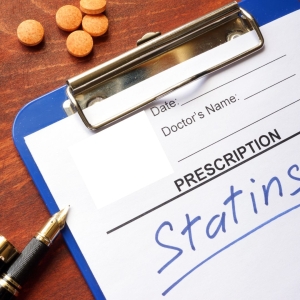But aren't you not supposed to start new patients on high doses of statins? Or do you incompetently not know that?
Except that high intensity statins are not recommended by the FDA since 2011.
FDA announces new safety recommendations for high-dose simvastatin June 2011
The latest here:
Statins and ICH – Ongoing Controversy

Author: Dr Enache Iulia-Ioana, MD
National Institute of Neurology and Neurovascular Diseases, Bucharest, Romania
Ever since the SPARCL trial, the use of statins in patients that have suffered an intracerebral hemorrhage (ICH) has become controversial. The most recently published AHA/ASA guideline for the management of spontaneous ICH places the decision for statin usage in the hands of the clinician. It elaborates on the necessity to compare the patient’s risk for recurrent ICH versus ischemic events before a treatment decision is made.(1)
The SPARCL study randomized patients with a previous stroke or TIA to a high dose of atorvastatin treatment or placebo. Despite the overall benefit of treatment, a post-hoc analyses showed an increased number of patients with intracerebral hemorrhage (ICH) in the treatment arm (n=55 for active treatment vs n=33 for placebo; unadjusted HR 1.68, 95% CI 1.09 – 2.59). These ICH were, however, equally fatal regardless of treatment (n=17 in the atorvastatin and n=18 in the placebo group). The highest contributing risk factor for an ICH was found to be a previous hemorrhagic stroke and the contribution of atorvastatin was minimal.(2) Doubts particularly arose with the appearance of new studies that contradicted this key finding of SPARCL; for example, one large Danish cohort study suggested that the risk for ICH may even be reduced by statin usage in patients with a previous ischemic stroke, raising concern that withholding treatment may be damaging.(3)
The molecular mechanisms underlying statin influence on cerebral hemorrhage risk have been looked into and it seems they can tip the scales in one of two ways. On the one hand, statins have pro-fibrinolytic, anti-aggregating properties, which could explain a pro-ICH effect.(4) On the other hand, by reducing inflammation, oxidative stress, and strengthening atherosclerotic plaque stability and endothelial function, statins could reduce the vessel wall susceptibility for hemorrhage.(5,6)
The two main etiologies of ICH – hypertensive arteriopathy and cerebral amyloid angiopathy (CAA) – may be differently impacted by statin usage and, therefore, should be taken into account in the decision-making process.(7) Whereas the medication may lead to a higher occurrence of lobar (cortico-subcortical) cerebral microbleeds, this association was not found with deep, (hypertension related) microbleeds.(8) Other authors found that there may be a genetic susceptibility as well as patients with certain ApoE genotypes associated with CAA seemed to have an increased risk of lobar ICH under statins.(9)
With these dilemmas at hand, certain studies have attempted to conceive algorithms to assist clinical decisions. Those with evidence of a high risk for ICH, such as those with CAA, should probably be informed of the potential hazards of statin continuation.(7) If patients with ICH were taking statins, they should not be stopped suddenly, as there may be rebound effects: discontinuation leads to a proinflammatory status, with excessive thrombocyte activation(10–12). Some have found increases in vascular events (although they are not clinically important in a short term cessation)(12,13) and one other study identified higher risks of neurological deterioration and poor outcome after ischemic stroke.(14) Cessation should probably be left for the post-acute phase (after about 6-12 months) should the patient have lobar ICH and should the hemorrhagic risk prevail over the risk of ischemic stroke.(7,15) Statin-naïve patients with ICH should not receive statins unless they are clearly indicated for the prevention of ischemic stroke.(1,7,15)
In conclusion, uncertainty remains about the relationship between statins and the risk of ICH. Clinicians should base their decision on both the risk for future ischemic stroke and the risk for ICH. As PCK9 inhibitors are currently emerging as a possible lipid-lowering alternative, their risk of ICH should also be investigated before they can be recommended in patients with increased risk for ICH.(1,15)
No comments:
Post a Comment